The hidden figures of Howard Tangye
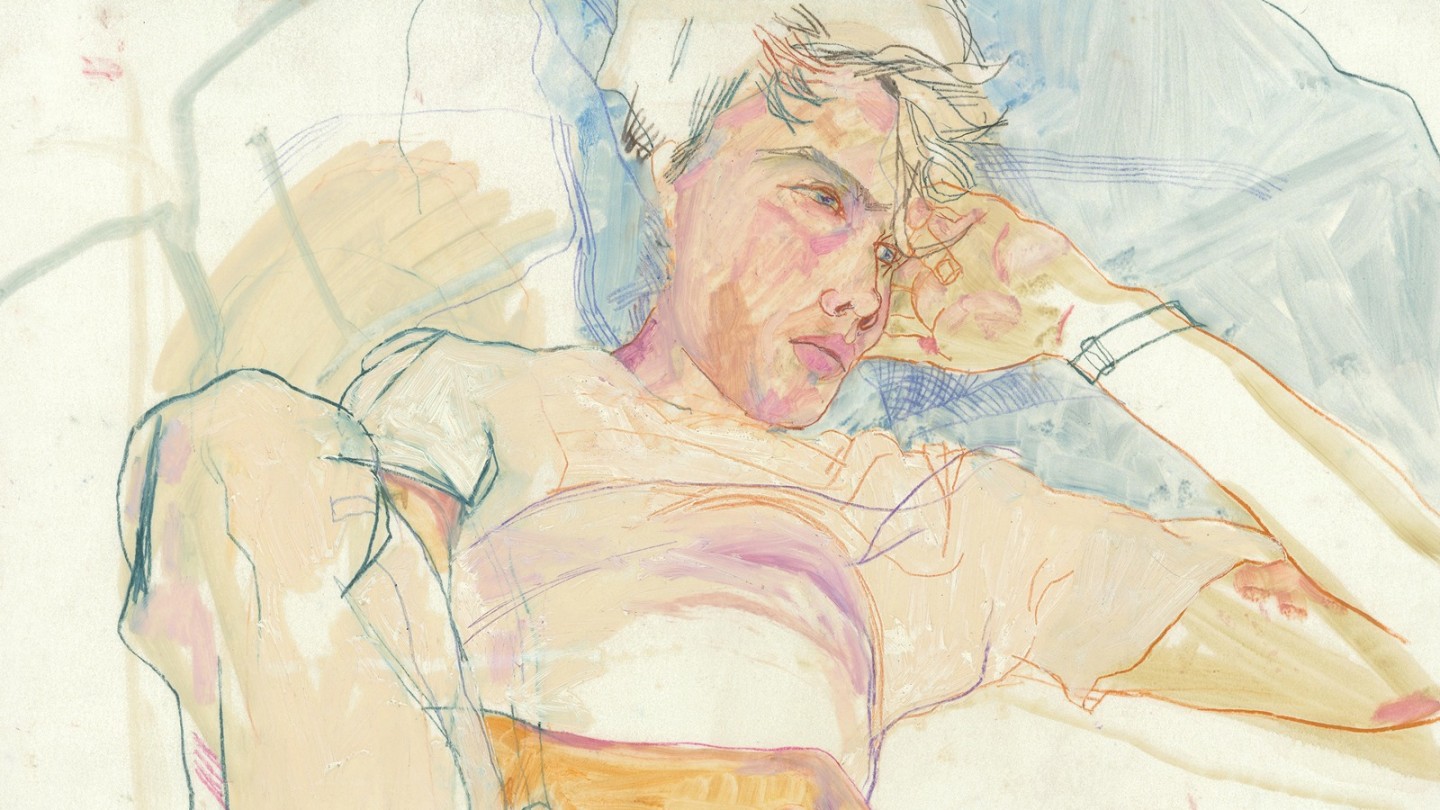
Roula Khalaf, Editor of the FT, selects her favourite stories in this weekly newsletter.
I am standing in a fairly ordinary terraced-house kitchen in north London as the owner Howard Tangye makes me a cup of tea in a very ordinary Arsenal mug. But as I follow him and the scent of white spirit to the first floor, the mood shifts.
The journey to Tangye’s artistic world begins with the painterly golden-toned stairwell walls; takes a turn at a découpaged panel of patterned papers and passes a hanging display of antique puppets, glass baubles and a disco ball; before culminating in Tangye’s studio – a Victorian sash-windowed space filled with creative clutter.
“Everything happens in this room,” says 72-year-old Tangye, a former tutor and head of womenswear design at Central Saint Martins whose pupils included John Galliano, Stella McCartney and Christopher Kane. But what happens in Tangye’s studio – its tables laden with oil pastels, pencils and knick knacks, and the walls plastered with newspaper clippings and art postcards – isn’t fashion design, but figurative drawing. It’s a practice he started half a century ago after moving from Australia to London aged 18, and enrolling as a fashion student at Saint Martins himself.

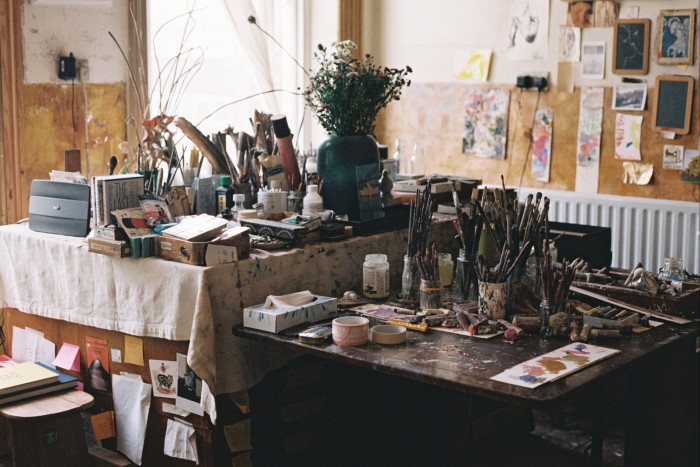
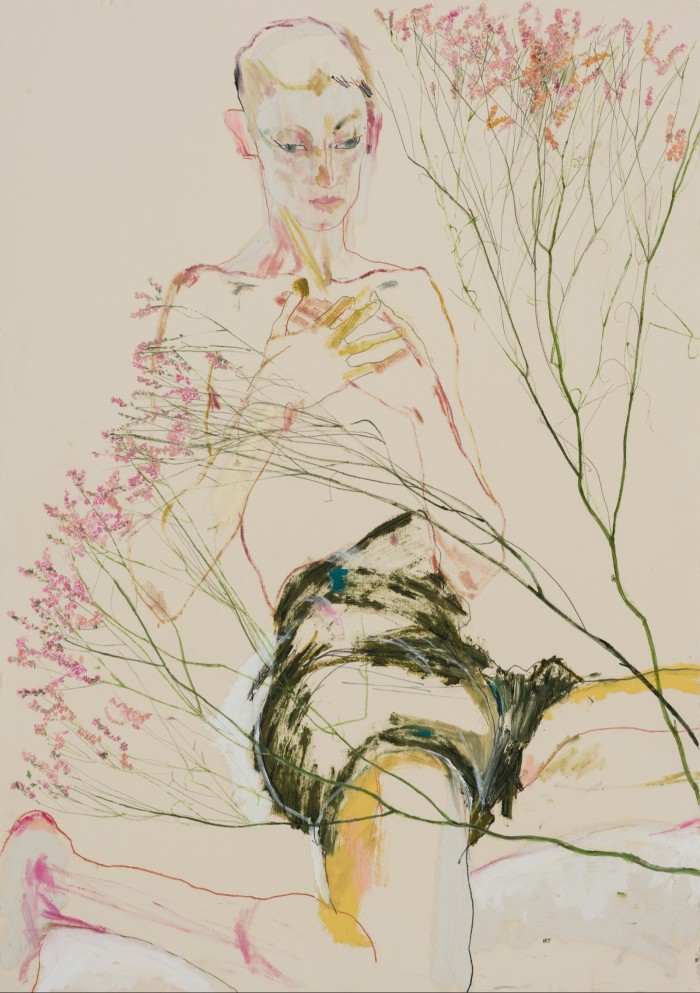
“The fashion school had a really strong drawing department and I loved the classes,” says Tangye, dressed in all-navy painting attire, which just happens to be vintage Yohji Yamamoto. “I also really loved the creative aspect of fashion design and I still do.” After graduating, he went to New York on a scholarship to study life drawing, “but figurative art was really frowned upon in the ’70s”. He later started his own fashion label, but hated the business side of it. “So when I was offered a teaching role at Saint Martins I thought it was great. I could teach and do my own drawing. That was my perfect life. And that’s what I did for more than 30 years.”
Today his work, a series of linear yet colour-daubed drawings of both men and women, is notable for its elegant yet energetic style. He has pieces propped upon easels and dotted around the house, but also stacked up in plan chests as part of a mission to archive his work that began in 2019. The artwork totted up to 1,728 pieces – a figure to which he estimates he can now add a few hundred more. “When I retired six years ago, I knew exactly what I wanted to do,” he adds. “I just carried on with it full time, which has been wonderful.”
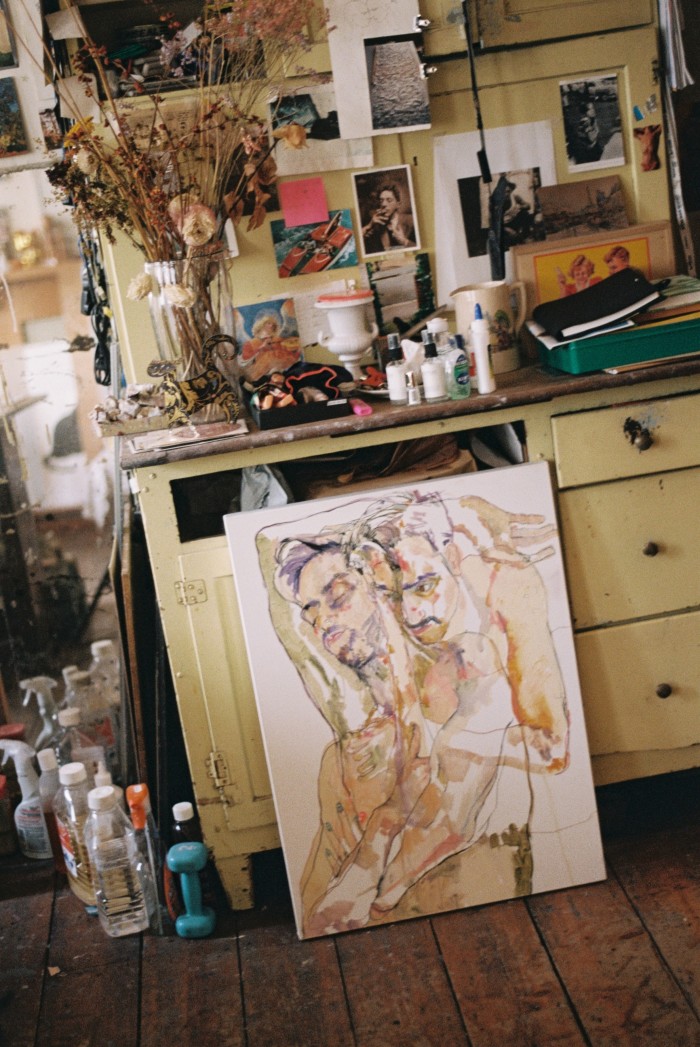
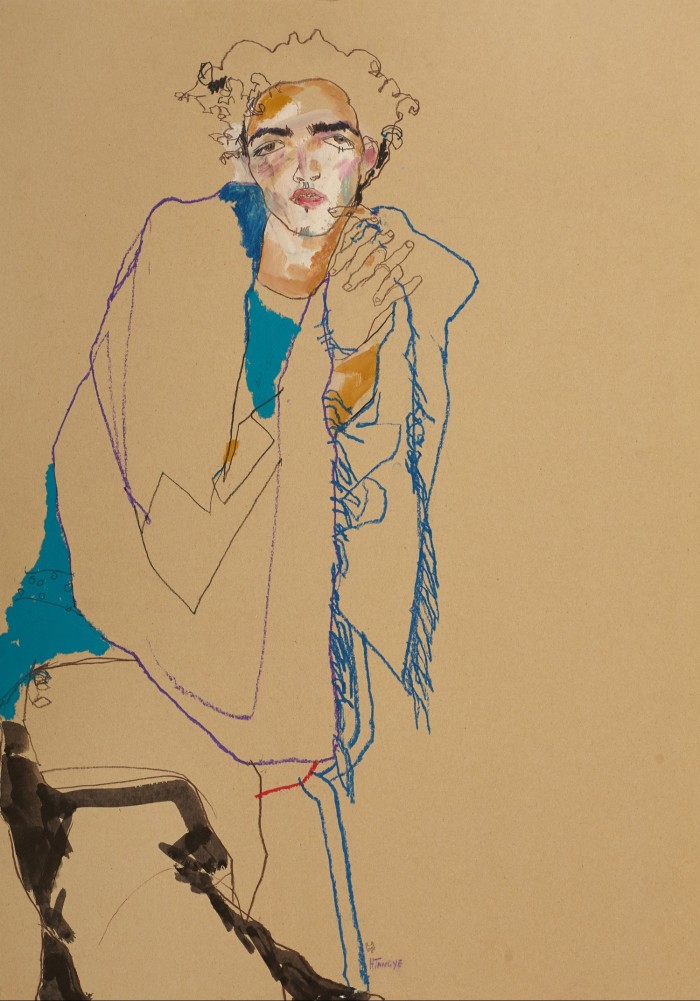
Scrolling through his portraits, the back catalogue reveals some familiar names: Wes Gordon, the now creative director of Carolina Herrera has sat for him, as have recent Chloé collaborator Julie Verhoeven, Zac Posen and the late Richard Nicoll. His image is now in the National Portrait Gallery’s collection. Former student Sarah Burton, creative director of Alexander McQueen, chose to showcase Tangye’s drawing process in a film last year – and the V&A has 56 of his artworks – but outside of the fashion world Tangye’s name remains relatively anonymous. His work has only rarely been exhibited in galleries and he has kept his passion largely to himself.
“He is a wildly under-appreciated artist given the influence he has exerted on a generation of fashion icons,” says Rupert Martin, a former sales and research associate at a private gallery who is now Tangye’s studio manager. “I’ve sat for him a few times, and each time it was quite magical. We sort of fell a bit in love with each other, I think. But when I received the files of his archive, it was like being given the keys to a museum – a whole life’s work that was just sitting in his studio. He’s been working on these very quietly. I thought, ‘More people should see this.’”
Tangye has never been motivated by the recognition. “If it happens, it does,” he says. “And if it doesn’t, it won’t stop me from working. I just want to do it for myself. I was never good at being part of a group or following fashion. I just had to create my own thing. I was inspired by many artists and designers but I knew that I didn’t want to be like them. The process just comes from what I want to do.”
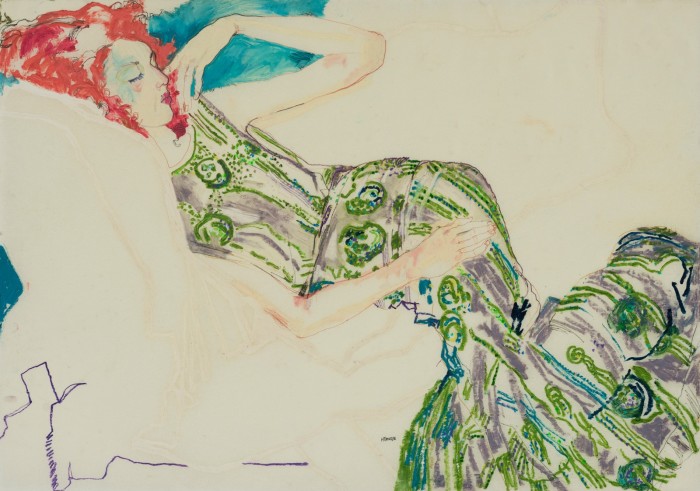
Tangye’s work is often compared to Egon Schiele – the Austrian expressionist painter who was a protégé of Gustav Klimt. “It’s a huge compliment,” he says. “His work is extraordinary. But I was never consciously inspired by him. If you put one of his drawings next to mine, they’re not like each other at all.” Whereas Schiele’s images skew to the erotic, even pornographic, Tangye’s languid figures are more often clothed and have a more romantic air about them. His line drawing, he suggests, owes more to Matisse – “the fluid, continuous way he uses the line. I love that aspect of his work. It’s a bit like drawing by the seat of your pants.” He also finds inspiration in abstract paintings. “I like the philosophy behind it. An artist I go to regularly is Agnes Martin,” he says of the American painter who pursued artistic perfection via her large-scale pairing of grids and repeat stripes.
When it comes to who Tangye draws, his sitters “need to be willing to participate in the work”, he says. “Yes, there’s something about the way they look, but it’s really about how they move, how they are within themselves. They are people who have dreams and ambitions of their own, which makes them really interesting.” For instance, it was Zac Posen’s energy that intrigued Tangye. “He’s a very animated person – creative and itching to get on and do things,” says Tangye. “Unfortunately, when he sat for me, he could not sit still! I did four or five very fast drawings and that was it.”
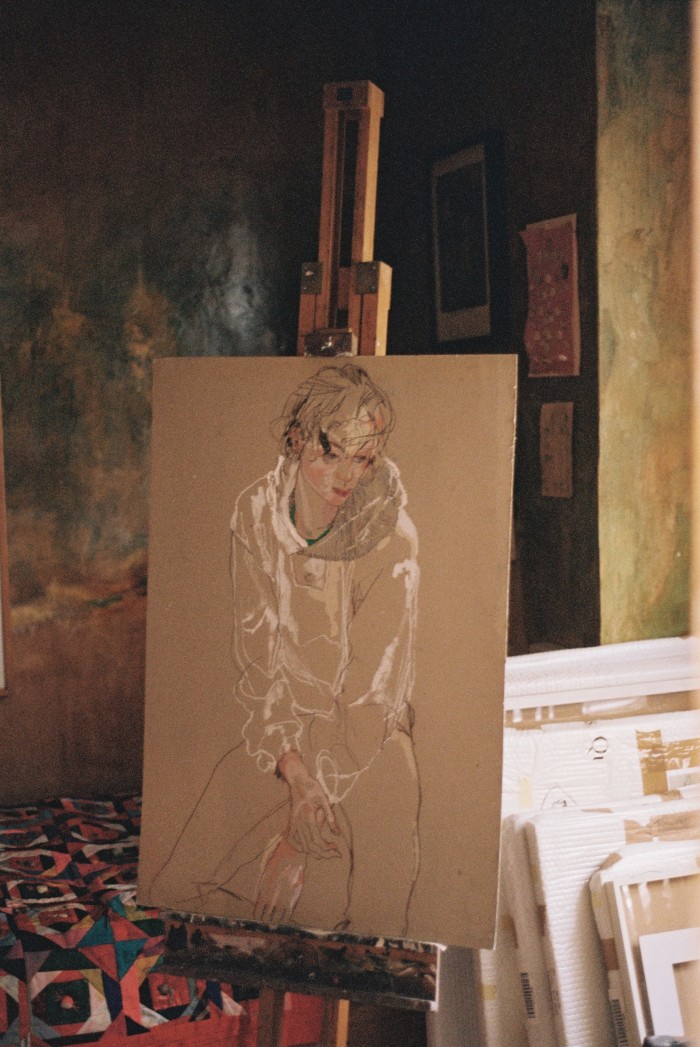
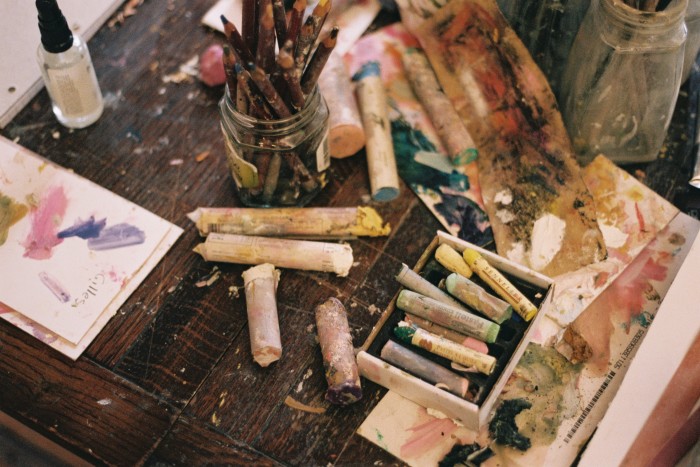
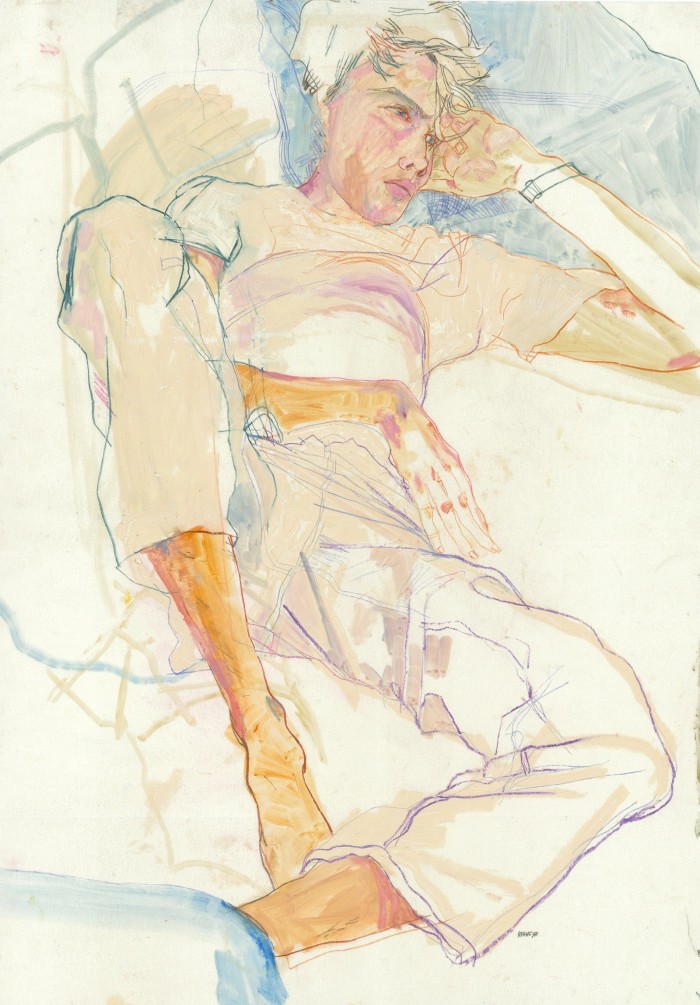
Wes Gordon, on the other hand, was far less hyperactive. Tangye recalls him drifting away as he posed. Gordon says: “I spent many an afternoon reclining on the sofa in his studio, half awake, while Carla Bruni’s album Quelqu’un m’a dit played on a loop, Howard standing at his easel in the corner, drawing his beautiful lines. One of the portraits of me hangs in my office now, a daily reminder of London, Howard and Saint Martins.”
One of Tangye’s former pupils he’d like to draw is John Galliano, now creative director of Maison Margiela. The designer has commissioned Tangye to commit his designs to paper on several occasions, but he’s never been asked to sit for his former tutor. Of his time at Saint Martins, Galliano says: “I would trust Howard’s every critique and his constant encouragement still rings clear as school-lunchbreak bells pealed. He was as soothing as Chopin is to the soul, especially after the hardcore assessments from other professors. To this date, I am humbled by Howard’s work: his laser-sharp eye, piercing through subjects; his curious and quizzical line, this deeply, deeply beautiful line – the line that encouraged me to cut clothes with the same passion.”
Tangye’s subjects aren’t, however, uniquely fashion related. Oscar Lhermitte, a French product designer, has been a regular sitter, and Tangye almost captured the plumber who fixed his boiler a few years ago. “I thought he looked amazing and I asked him to sit for me, which I very rarely do because I’m a bit shy,” laughs Tangye. “He said, ‘Yeah, OK’, but then we went into lockdown and it never happened.”
That enforced pause in daily life pushed Tangye’s creativity to new places. “I’ve been drawing people over Zoom,” he says, “and it has meant that the work has become more tonal than linear. But now that I can have someone back in the studio – and that’s definitely my preference – the work is a bit of both. It’s a nice development.” He’s also recently been working on a larger scale. In his Evergreen series, several almost life-size figures overlap in compositions that, for him, evoke the Australia of his childhood home.
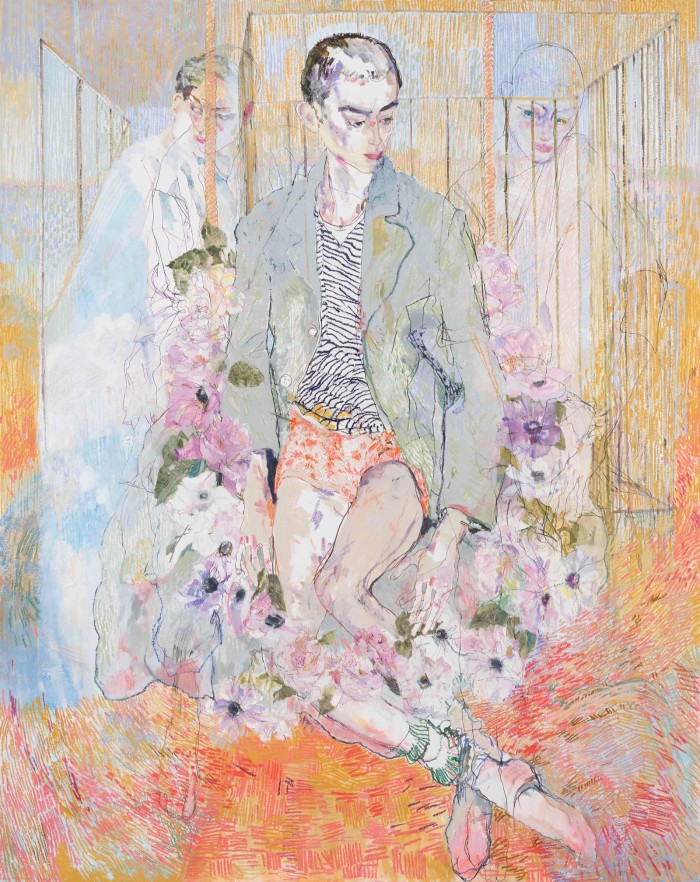
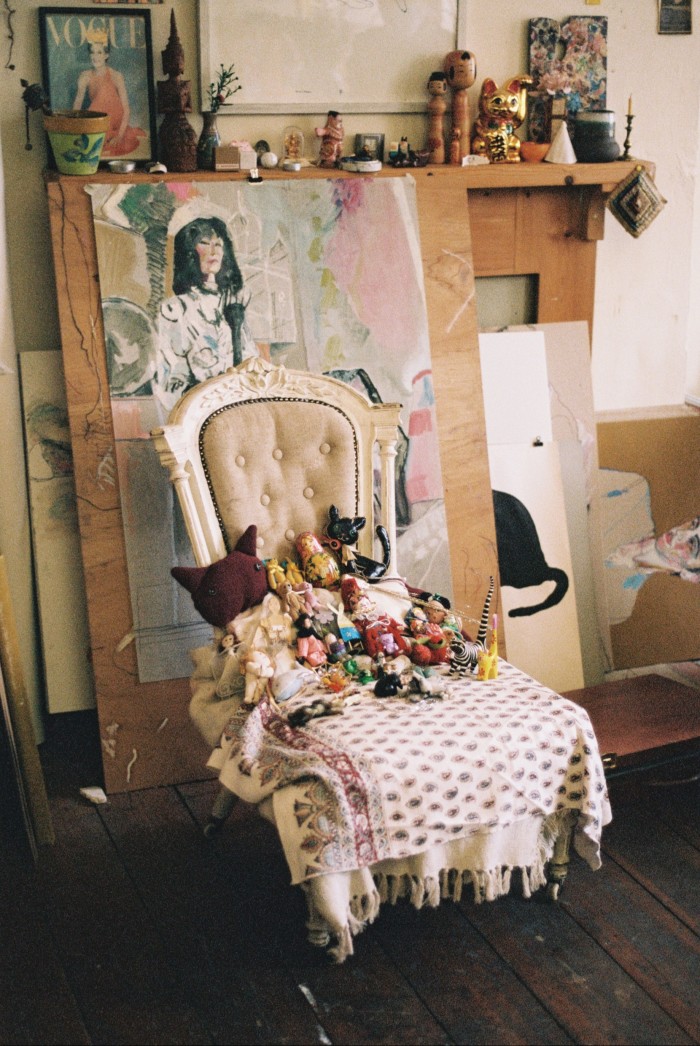
“One of the places where I grew up was Mount Isa in Queensland, way out in the bush,” says Tangye. “It was an idyllic time and I automatically go back there in my mind.” He points to two small watercolour paintings by his mother Betty that depict the landscape of Australia’s Magnetic Island. “I’ve been feeling the pull back there,” says Tangye, who has lived in his north London home for over 40 years – first staying with friends, before taking over a flat and later acquiring the entire house. “I didn’t choose it – it chose me,” he smiles as he recalls how he’s stripped back layer-upon-layer of wallpaper and paint, then sealed the worn-away textures with varnish. “Whenever I come through the door, I feel really good, but I realise it might be time for a change soon.”
Martin has his sights set on Australia – and giving Tangye’s artworks the platform they deserve. “There’s a few museums over there I’m talking to,” he says. “I think that would be a bit of a moment for Howard – a big show in Australia as a homecoming, that’ll be the thing.”
A typical drawing is around £4,250 via howardtangye.com; a selection is also available on 1stdibs.com
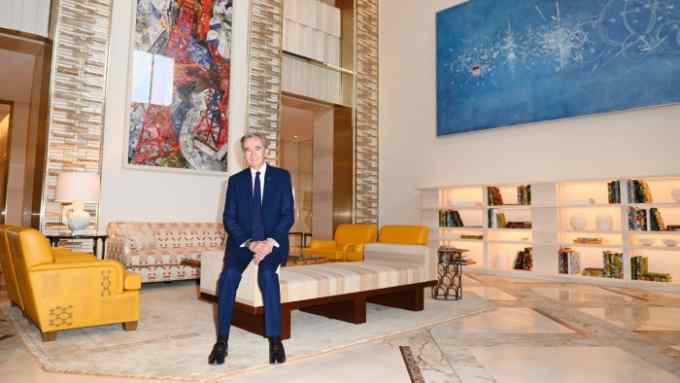
Comments